#ruminant
Text
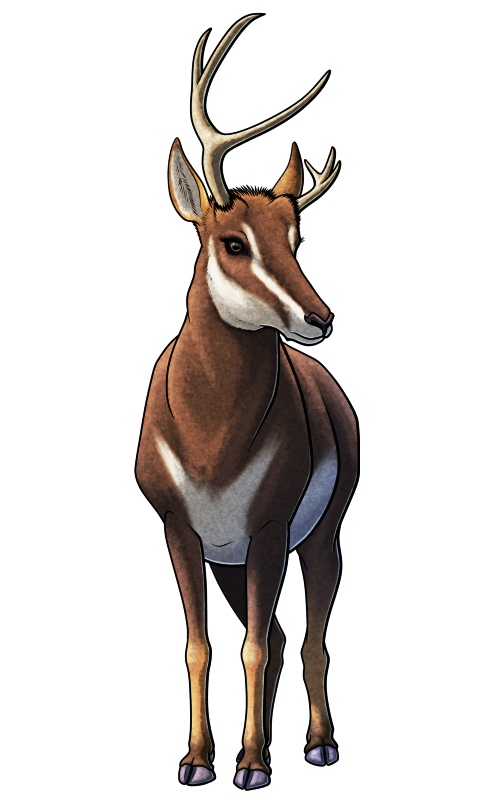
Strange Symmetries #21: Uneven Ungulates
Asymmetry is commonly seen in the headgear of modern even-toed ungulates, with natural genetic variation, developmental stress, and injuries during life sometimes causing very wonky-looking horns or antlers.
No living species have asymmetry as a standard trait, however – but some fossil ungulates did.
Ramoceros osborni was a relative of the modern pronghorn living during the mid-Miocene, about 13 million years ago, in open plain habitats of what is now the Midwest and Mountain states of the USA.
It was smaller than modern pronghorns, around 70cm tall at the shoulder (~2'4"), and males had long antler-like horns with three tines. Bizarrely, one of these horns was always at least twice the size of the other, with "left-horned" and "right-horned" individuals seeming to occur in equal numbers.
It's not clear how this asymmetry affected combat between males. Could they only properly lock horns with "opposite-sided" rivals, or did this uneven arrangement actually prevent physical fights and restrict them more to just visual displays?
———

Meanwhile in China another Miocene ungulate known as Tsaidamotherium hedini also had strange headgear, with an enlarged right "horn" forming a helmet-like dome on top of its head. This species was featured here on the blog just year, so check out that post for more details about it.
———
NixIllustration.com | Tumblr | Twitter | Patreon
#science illustration#strange symmetries#paleontology#paleoart#palaeoblr#ramoceros#merycodontinae#antilocapridae#pronghorn#giraffoidea#ruminant#artiodactyla#ungulate#mammal#tsaidamotherium#art
458 notes
·
View notes
Text
Random animal facts
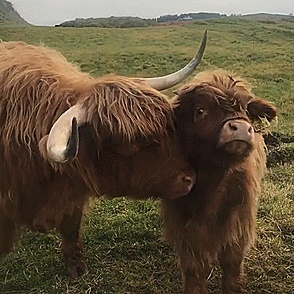
Cows have no upper front teeth. However, in total, they have 32 teeth and chew about 40-50 times a minute.
Bones of the garfish contain biliverdin, a tetrapyrrolic bile pigment, which causes them to be green in color.
The frontal lobe of horses is very small compared to human one. That means they cannot hold grudges, plot revenge or for example try to win.
Bambiraptors had enlarged cerebellum, which may indicate higher agility and intelligence than any other related dinosaurs had. It is actually a dinosaur with the largest brain for its size that has ever been found, however the brain size may be due to the age of the discovered juvenile individual.
Camels are very social animals that live in herds led by a dominant male (other males form bachelor herds). Camels greet each other by blowing air into their faces. However, during rutting season, the males show aggressive behaviour.
#animals#biology#nature#cows#camels#dinosaur#dromaeosaur#bambiraptor#paleontology#zoology#fossils#ruminant#cow#camel#horse#fish#wildlife
103 notes
·
View notes
Text
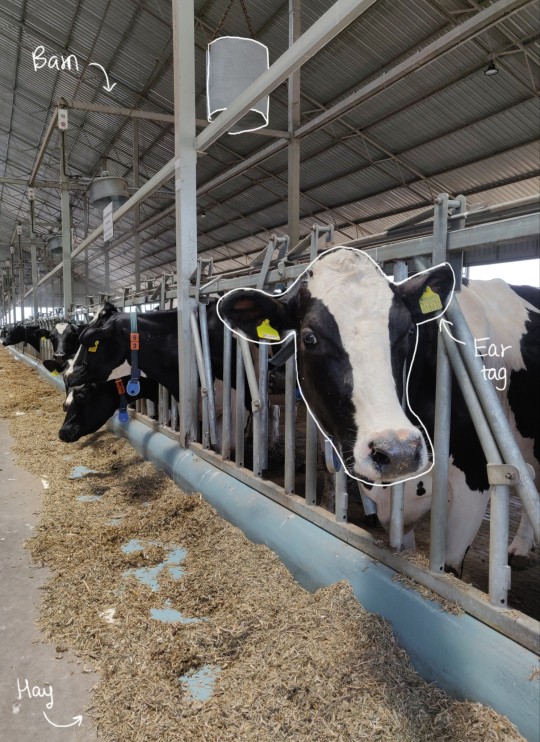

28 April 22
Cattle farm rotation month. It's scorching hot ☀️ with warm loo gushing at us at every given point in the day.
4 rotations in a month at the farm :
Milk 🥛 processing unit ✔️
Lab
Cattle shed ✔️
🐐 and 🐑 unit
The most common diseases encountered - are vector borne like Anaplasmosos, Theileriosis, and Babesiosis. Milk fever and downer cows are a rare occurrence.
#vetblr#vet studyblr#vet student#vetmed#veterinary student#vet school#veterinary#studyblr#veterinary care#veterinary medicine#cattle#cattle farming#internship#farmlife#farm aesthetic#livestock diseases#ruminant#ruminants#brown aesthetic#vet med#vetlife
25 notes
·
View notes
Text
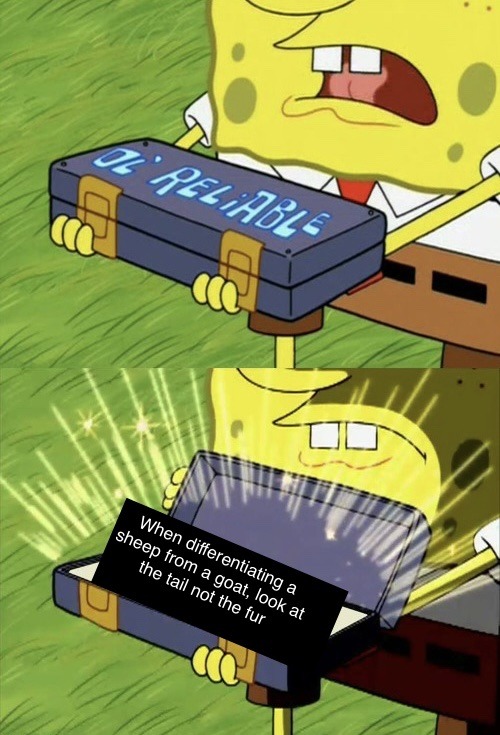
Sheep tail go down goat tail go up that’s all you need to know
26K notes
·
View notes
Text
More proof that humans interfere with animal’s natural lives for the human’s gain. 😡 #GoVegan
0 notes
Text
Thinking about Alpha!Sukuna who thinks all humans smell disgusting. He just cannot stomach their scent. To him it’s like smelling farm animals. Whether it was years ago during his time or now, while he inhabits the body of this pink-haired brat, humans still smell like cow manure. Overbearing and disgustingly heavy. He cannot stand it.
But when your scent hits his nose for the first time, he can’t help but stiffen. It’s…. light. Fresh. He smells coconut and citrus. It reminds him of the shrine made for him by the townspeople centuries ago, where they would offer him fruit and worship him. When he was revered and feared all the same.
He sees you then. Feisty little thing despite being an omega. You are a good sorcerer, filled with potential that he recognises even if your peers don’t. And Sukuna is hit with the overwhelming urge to scent you. In a way that the Alpha in him has never acted out before.
And it shocks him that you’re a human. A mere human who somehow fills him with intrigue. How dare you? But also, he needs you. Carnally. Now.
Once the King of Curses sets his eyes on you, good luck trying to escape him. You’re his forever. For the rest of his life.
#💭 late night ruminating#sukuna x reader#ryomen sukuna x reader#sukuna fluff#sukuna smut#a/b/o dynamics#alpha sukuna#omega reader#jjk x reader#jjk a/b/o#jujutsu kaisen#omegaverse#alpha x omega#jjk fanfiction
3K notes
·
View notes
Video
Watusi Cattle by Coyoty
Via Flickr:
Bos taurus indicus. At the Roger Williams Park Zoo in Providence, RI.
#Roger Williams Park Zoo#Roger Williams Park#Providence#Rhode Island#RI#zoo#nature#park#animal#fauna#Watusi#cattle#bovine#Bos taurus indicus#ruminant#horns#livestock#square#square format#wild#life#wildlife#biodiversity#Animal Planet#New England#flickr
0 notes
Text
Even in a purely, coldly utilitarian moral system, there are three questions to ask before accepting harmful or destructive Means because they ostensibly lead to a better End:
Do the Means lead to some other negative End, in addition to the intended one? The classical example of the naïve utilitarian doctor who kills a patient in order to harvest their organs and save five patients, in practice, if accepted, leads to general loss of trust in doctors and hospitals and therefore to much greater loss of life; hence, doctors should follow a hard rule of not killing patients to harvest their organs, even if this might save more lives in the shortest term.
Are the Means necessary in order to achieve the End? The negative utility of atrocious Means still ends up in the final account along with the supposed positive utility of the End (and without the penalty for uncertainty that the latter should arguably be given). The Means are as much part of the final state as the End.
Do the Means, in fact, lead to the End? Any consequentialist justification for an atrocity-for-the-greater-good automatically fails if the atrocity does not plausibly bring out the greater good, even before any other consideration is taken. It's all well and good to say that you can't make an omelette without breaking eggs, but (ignoring for the moment that people are arguably owed more consideration than eggs) a large chunk of the 20th century was a sustained and furious festival of egg-crushing and egg-trampling that resulted in precisely zero omelettes.
2K notes
·
View notes
Text
why dont you read/watch something that forces you to confront the fact that you are capable of feeling empathy for a person who has done deeply cruel or evil things. And maybe you’ll calm down
#why dont you ruminate in that feeling. Why dont you sit with it for days#people are putting some wild stuff in the tags. This post is about tyrion lannister
22K notes
·
View notes
Text
Ruminasyonun olumsuz düşüncelerin zihnimizi sürekli meşgul etmesi anlamına geldiğinden, birçok farklı nedenle ortaya çıkabileceğinden ve bizleri hem psikolojik hem de fiziksel olarak etkileyebileceğinden bahsetmiştik.
Peki ruminasyondan kurtulmak için sizin yapabileceklerin neler?
- Sizi ruminasyona sürükleyen tetikleyicilerden kaçının. Örneğin bir şarkı ya da bir yer. Eğer tetikleyiciniz bir kişiyse ilişkinizi tekrar gözden geçirmeniz faydalı olabilir.
- Doğada zaman geçirin,
- Egzersiz yapın,
- Meditayon yapın,
- Dikkatinizi farklı düşünceler ve işlerle dağıtın,
- Bu düşüncelerin gerçekliğini sorgulayın. (Eğer nasıl yapılacağını bilmiyorsanız daha önce paylaştığımız olumsuz düşüncelerle baş etme başlıklı reelsimizi inceleyebilirsin)
Eğer burada belirtilen önerileri uygulasanız dahi ruminasyonunuzla baş etmekte zorlandığınızı hissederseniz bir ruh sağlığı hizmeti almak da faydalı olabilir.
Dilerseniz bizimle iletişime geçebilirsiniz.
#danismanimnet#ruhsağlığı#terapi#onlineterapi#rumination#psikoloji#psikolojikdanışmanlık#ruminant#kişiselgelişim
1 note
·
View note
Photo
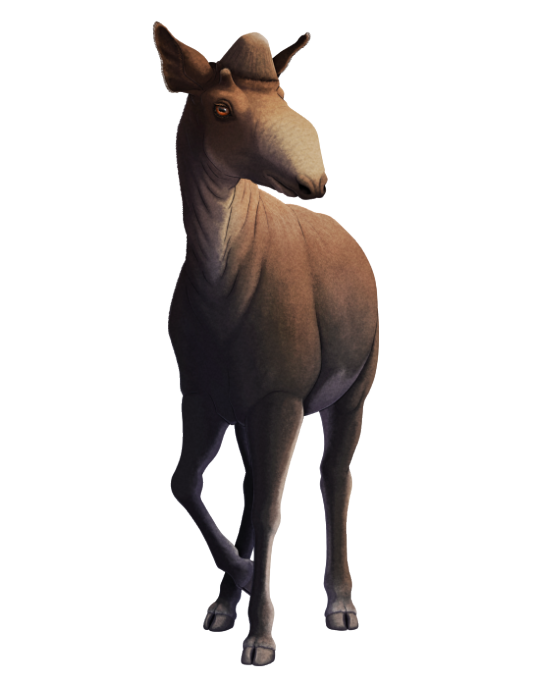
Tsaidamotherium hedini was a ruminant ungulate living around 11 million years ago during the late Miocene, in the northeastern part of the Tibetan Plateau in what is now Northwestern China. Although it's known only from partial skull remains it was probably similar in body size to a large sheep, about 80cm tall at the shoulder (2'7").
Since its discovery in the 1930s it's traditionally been classified as part of the muskox lineage, but in 2022 it was proposed to actually be a giraffoid very closely related to the newly-discovered Discokeryx.
Tsaidamotherium had some extremely unusual headgear, with highly asymmetrical "horns" (actually ossicones if was a giraffoid). The left one was small and positioned above the eye, while the right one was shifted back and towards the middle of the forehead, and was expanded out into a wide bony disk that would have supported a large helmet-like domed keratin covering.
Its skull also had a very large nasal cavity resembling that of the modern saiga antelope, suggesting it may have convergently evolved a similar sort of complex air-filtering snout to deal with dry cold air in its mountainous habitat.
———
Nix Illustration | Tumblr | Twitter | Patreon
#science illustration#paleontology#paleoart#palaeoblr#tsaidamotherium#prolibytheriidae#giraffoidea#ruminant#artiodactyla#ungulate#mammal#art#that is an excellent snoot#unicorn#unconventional unicorns
333 notes
·
View notes
Note
Have you ever animated or attempted to? And If so, Did you like it or was it just not for you?
Also, Love all of your artwork! Every single drawing you publish is an absolute masterpiece!

i animated this kiss over a couple days!! i'd love to animate more, and there are a couple of songs i've storyboarded things to, but honestly its just always a massive commitment and I usually can't spare the time for it.
#but there are lots of ideas i have just ruminating#ping pong-ing around my empty cavernous brain#askbox
3K notes
·
View notes
Text
Banteng
Bos javanicus
Banteng is one of three (or four) wild cattle species, found mainly in the forests of Southeast Asia. The largest populations of bantengs occur in Java, Cambodia, Borneo (Sabah) and Thailand, but they are also present in Kalimantan and Myanmar and there are also feral populations in the Northern Territory of Australia. It's possible they are extinct in India, Bangladesh and Brunei. The herds consist of 2-40 individuals and of a single bull, usually.

They are similar to cows, with body length bewteen 1,9-2,25 metres. Wild bantengs are usually larger and heavier than their domesticated counterparts - the domesticated population consits mainly of the Bali cattle. Because of the unusual length of thoracic vertebrae in bulls, the back is elevated and it looks as if the animal had a hump. There is present an extensive sexual dimorphism in bantengs - bulls have long, slender horns with sharp tips, arcing upwards and slightly forwards; cows' horns are shorter, tightly curved and pointing inwards at the tip. Speaking of sexual dimorphism, adult bulls are large and sturdy and usually of dark brown or black color (however, sometimes, the bulls can retain their brown color, ocassionally with white spots); the cows, on the other hand, are thinner and have a light brown or red coat. The juveniles are reddish brown. Furthermore, females and young animals also have a dark line running across their backs and aged bulls can turn gray. Another distinctive thing about bantengs' appearance are their white to light brown underparts, white legs and patches on their rumps, light colored faces and black snouts.
Bantengs are active both during day and night. These herbivores usually feed on grass, sedges, leaves, fruits et cetera. They can go without hydrating themselves for a really long time, however, if possible, they drink a lot, usually from standing water. We don't know much about reproduction of bantengs, but it's expected to be similar to one of taurine cattle. The gestation period is 9-10 months long and a single calf is born. The calves are suckled up to 16 months, however, some cows continue nursing until they give birth to another baby. Bantengs live for as long as 26 years. Another interesting fact is that bantengs have a symbiotic relationship with Torresian crows, that feed of their ectoparasites (possibly ixodid ticks) - and it's important because it's the first known symbiosis between a native bird and a non-native mammal, and it took 150 years to form.

Bantengs can be bred to other bovine species, such as cows and water buffalos, however, this can be a threat to banteng population. Because of that, Bali has banned other cattle varieties on the island.
Now, the "vet med" part. Bantengs are hosts to several endoparasites (liver flukes, intestinal worms and Paramphistomum species) and ectoparasites (usually some tick species, even though bantengs are usually immune against them (and tick-born diseases).) Bantengs are suspectible to bovine malignant catarrhal fever (which is usually fatal and animals that survive are infectious for the rest of their lives and may relapse). Another illnesses that have caused deaths in captivity are black leg or quarter ill, and bovine viral diarrhoea. There is also a skin disease seen only in bantengs - bali ziekte. It begins with a dry eczema, that turns into a necrosis and lacerated mucous membranes in the affected area.
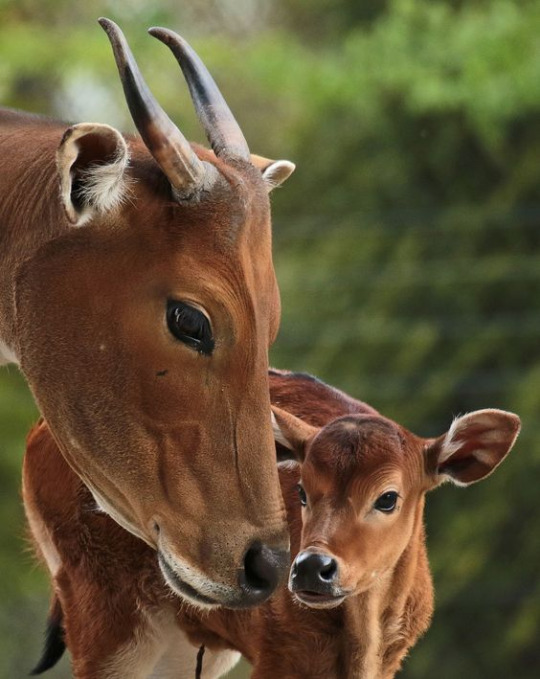
5 notes
·
View notes
Text

"Let us not forget that the cultivation of the earth is the most important labor of man. When tillage begins, other arts follow. The farmers, therefore, are the founders of human civilization.”
This Kisan Diwas, let's all find time to express our sincere gratitude to our "Annadatas".
#KisanDiwas#farmersday#kisandiwas2022#supportfarmers#anndata#farmer#farmers#farmerlife#kisan#vetina#ruminant#ruminantproduct#vetinaindia#cow#farmersinindia#happyfarmersday#cattles#mumbai#delhi#pune#ahmedabad#bangalore#chennai#agriculture#farm#vetinahealthcare
0 notes
Text
every jewish person's tumblr is now a jewish tumblr.
I have seen so, so many tumblrs post something like, "This used to be my x blog, but ever since Oct 7 I've just been posting Jewish stuff." Because we're all suddenly drowning in antisemitism and reaching out to each other to build community to combat that.
It would be nice if Jewish life could go back to not revolving around antisemitism. But then, a part of me says, that was all it was before the Shoah; maybe it was just the time from afterward until Oct 7th that was the unusual part. Maybe this is what it'll be for the rest of our lives.
2K notes
·
View notes
Text
Prompt: AU where Jason Todd didn't get taken in by Bruce, because he actually succeeded in stealing the batmobile's tires. He sold them to the local mechanic, who was so scared for him (the tires are pretty distinctive) that he kinda-adopted Jason himself to protect him from any fall out.
Batman still figures out who stole his tires and confronts Jason, who refuses to be cowed. Bruce is just as amused and impressed at this twelve year old's gumption.
Cut to ten years later. Jason now runs the Alley's workshop, and is Batman's emergency mechanic when the car breaks down in the city.
On your average tuesday night Killer Croc shreds the batmobile's tires and Batman skids into the shop, with fucked up rims and shredded rubber going everywhere, and a twenty two year old Jason in coveralls and smudged engine oil is just like 'again, old man?'
#jason todd#red hood#dc#batman#bruce wayne#mechanic!Jason AU#I don't know if I'll do anything with this#still just ruminating on it#but I think there's fun to be had#with a relationship that's not paternal#but still annoying and caring and kinda competitive
1K notes
·
View notes